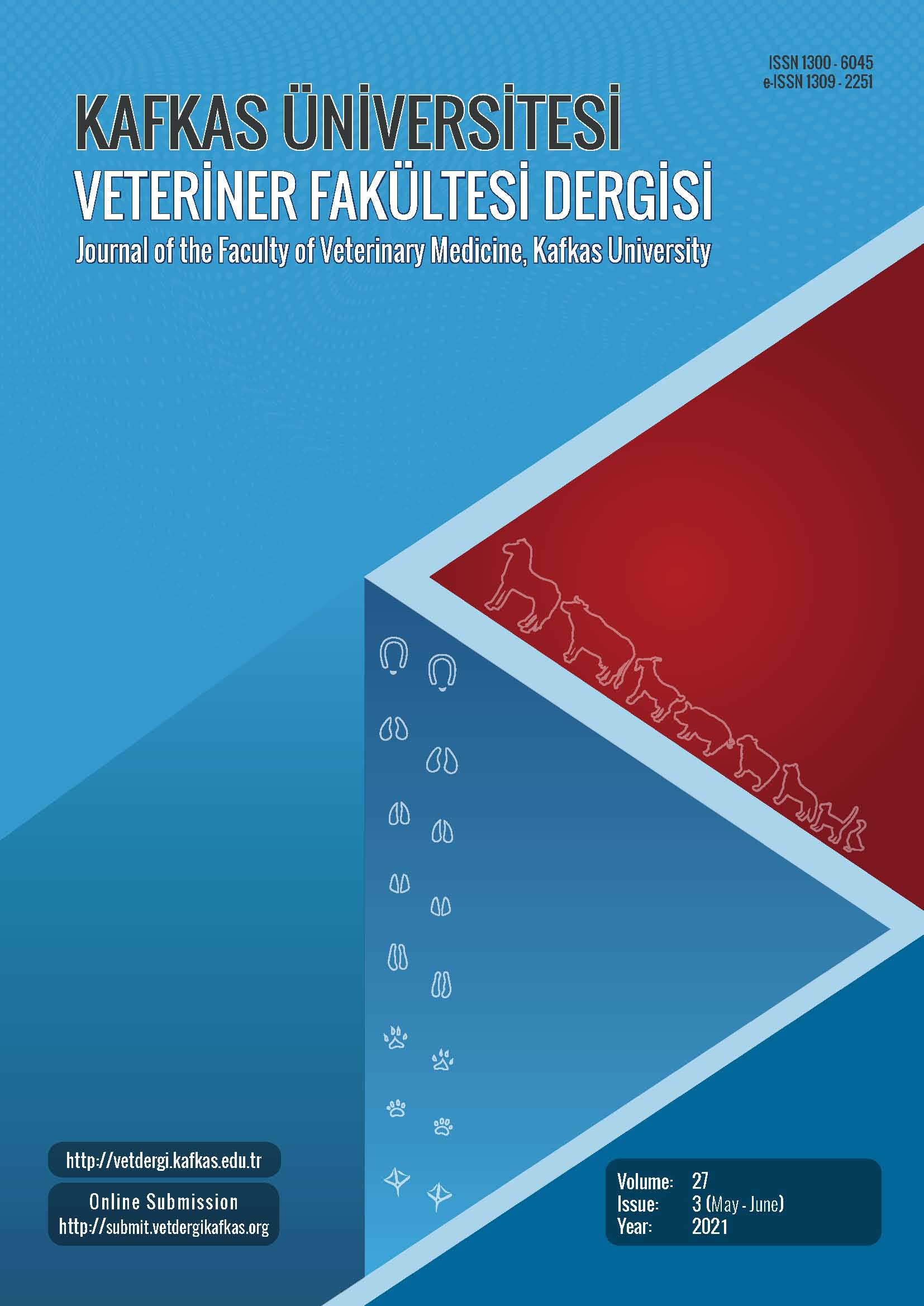
This journal is licensed under a Creative Commons Attribution-NonCommercial 4.0 International License
Kafkas Üniversitesi Veteriner Fakültesi Dergisi
2021 , Vol 27 , Issue 3
Assessment of In-vitro Antileishmanial Activities of Cynara scolymus Extracts Against Leishmania tropica
1University of Manisa Celal Bayar, Faculty of Medicine, Department of Medical Parasitology, TR-45030 Yunusemre, Manisa - TURKEY2University of Ege, Faculty of Pharmacy, Department of Pharmacognosy, TR-35040 Bornova, İzmir - TURKEY
3University of Ege, Faculty of Medicine, Department of Medical Biyology, TR-35100 Bornova, İzmir - TURKEY DOI : 10.9775/kvfd.2021.25656 It was aimed to investigate in vitro antileishmanial activities of the receptacle, bractea, and stem leaves extracts of Cynara scolymus (artichoke) against Leishmania tropica. The Leishmania isolate, isolated from a cutaneous leishmaniasis patient from Manisa province, Turkey and stored in liquid nitrogen, was identified as L. tropica (MHOM/TR/2012/CBCL-LT) by genotyping. In vitro antileishmanial activities of C. scolymus plant extracts were examined by CelltTiter-glo and hemocytometry, and cytotoxic activities by MTT. IC50 values of receptacle water (WRC), aqueous ethanol (ARC) and ethanol (ERC), bractea leaf water (WBC), aqueous ethanol (ABC) and ethanol (EBC), and stem leaf water (WSC), aqueous ethanol (ASC) and ethanol (ESC) extracts were determined as 2.45 mg/mL, 1.52 mg/mL, 1.66 mg/mL, 3.45 mg/mL, 1.46 mg/mL and 0.58 mg/mL, 0.24 mg/mL, 0.21 mg/mL and 0.08 mg/mL, respectively. When these results are compared with the drug-free control group, it was determined that stem leaf aqueous ethanol (SI: 7.98), ethanol (SI: 4.96) and water (SI: 2.71) extracts with the highest selectivity index (SI) values showed antileishmanial activity (P<0.05). Extracts of C. scolymus did not show cytotoxic activity except for WBC, WRC and ARC. In conclusion, the data presented in the current study indicated that C. scolymus stem leaf extracts (ESC, ASC and WSC) present eff ective antileishmanial activity. Future studies could focus on the identification and purification of the antileishmanial compounds within these extracts for analysis of their in vivo antileishmanial activity. Keywords : Antileishmanial activity, Artichoke, Cutaneous leishmaniasis, Cynara scolymus, Leishmania tropica










